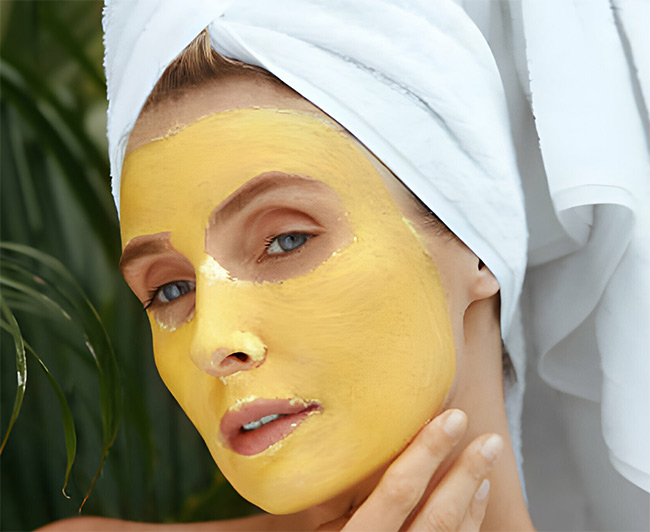To turn dry clay into a mask, you’ll need to add enough liquid to it to form a paste that’s easy to spread over your face. Those with dry or sensitive skin may choose to use moisturizing honey, milk or aloe, while someone with oily or acne-prone skin may use witch hazel. Sage is a drying, antimicrobial herb, making the Sage Green Mask best suited for oily skin. Try mixing with witch hazel and apply to areas plagued with blackheads.
Inflammation-taming cornflower and soothing lavender pair up nicely in the pretty Lavender Blue Mask featuring Cambrian blue clay. This mask could be mixed with aloe for dry or combination skin or with witch hazel or water for oily complexions. Powdered rose petals and pink kaolin clay make up the lovely Rose Pink Mask with astringent properties. Try mixing it with yogurt or milk to enjoy the benefits of their skin-softening alpha hydroxy acids.
Ingredients Yeilding: Around 2 Tablespoons (17 TO 20 Grams)
For the Sage Green Mask
- 1 tbsp (1 g) dried sage leaves
- 1 tbsp (16 g) French green clay
For the Lavender Blue Mask
- 1 tbsp (3 g) dried lavender flowers
- 1 tbsp (1 g) dried cornflower (bachelor button) petals
- 1 tbsp (16 g) Cambrian blue clay
For the Rose Pink Mask
- 1 tbsp (1 g) dried rose petals
- 1 tbsp (16 g) rose kaolin clay
Water, witch hazel, milk, yogurt or honey as needed to form a paste
Instructions:
Using a coffee grinder or mortar and pestle, grind the dried flowers and herbs to a fine powder, sifting through a fine mesh strainer if necessary. Stir the resulting powder into the clay until fully incorporated. Store in small jars or containers. Shelf life is 1 year.
To use, place a pinch in the palm of your hand. Add a few drops of your chosen liquid until a paste is formed. Apply to your face and leave for 5 to 10 minutes, then rinse well with warm running water. Use once per week or spot treat problem areas as needed.

























